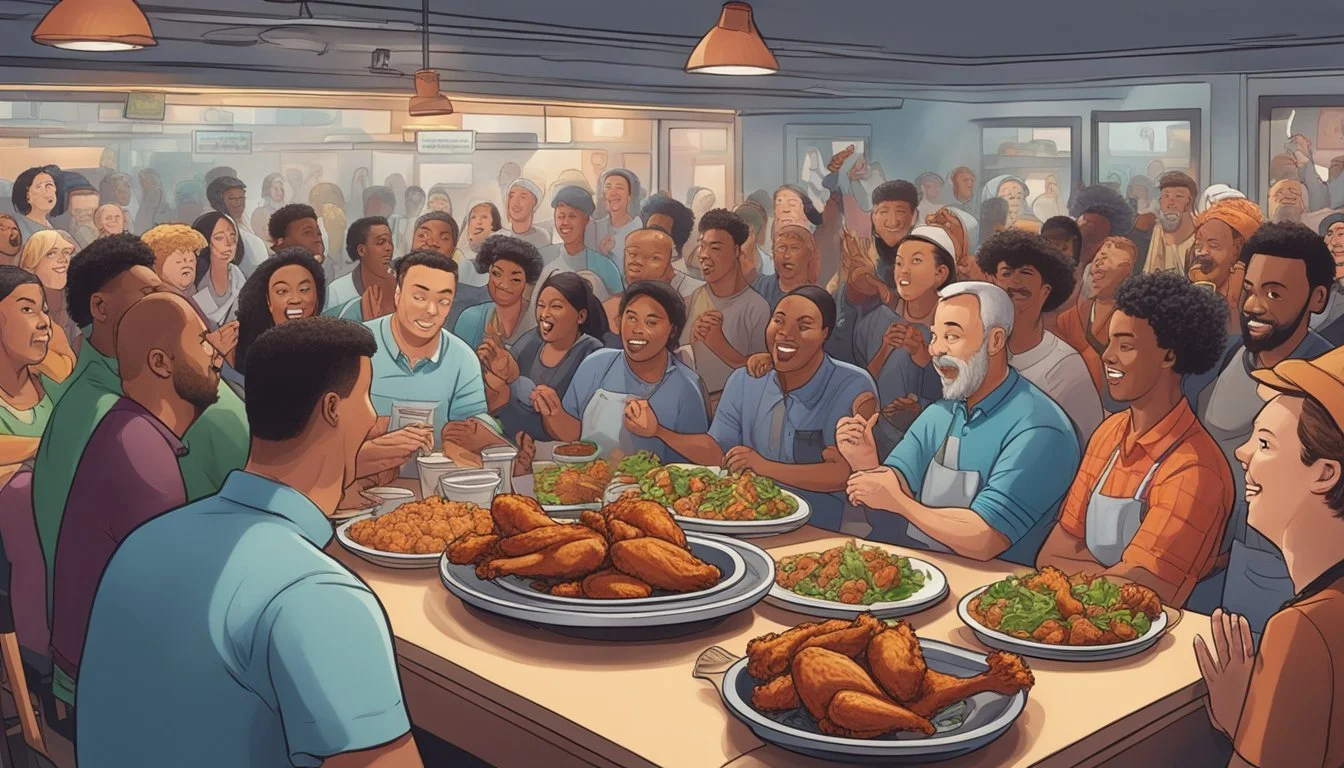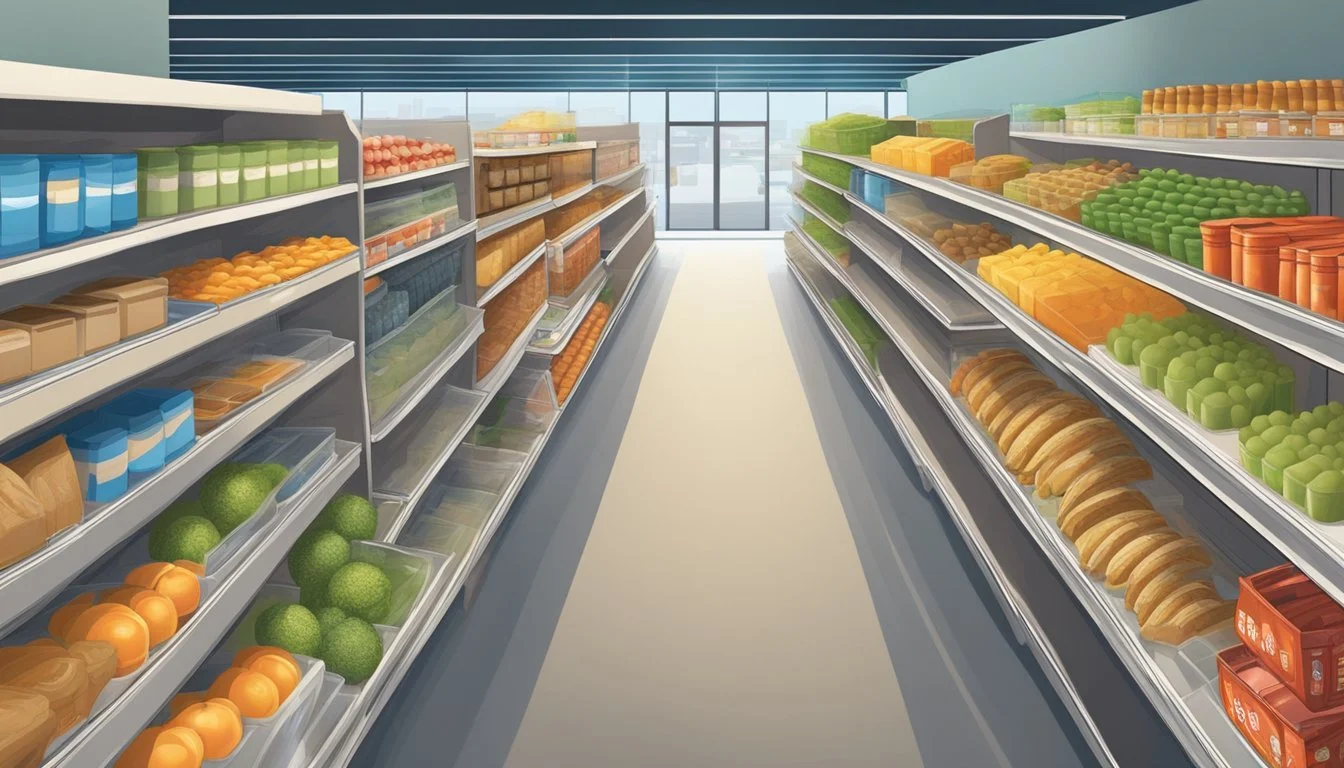South Carolina Food Challenges
A Guide to the State's Ultimate Eating Contests
In the spirited state of South Carolina, food challenges offer a unique slice of Southern culture where cuisine and contest combine. From towering burgers to formidable barbecue (What wine goes well with barbecue?) feats, these tests of gastronomic endurance are more than just meals; they are a badge of honor for those who dare to conquer them. Local establishments across the Palmetto State have upped the ante with challenges that promise not only a full stomach but also potential bragging rights and, in some cases, meals on the house for those who successfully complete these food challenges.
While some may tackle these food trials for fun, they tap into a broader narrative about food culture and accessibility in South Carolina. Looking beyond the oversized portions, the challenges also underscore the contrasts within the state’s food landscape. Instances of food insecurity and the lack of healthy options in certain areas frame a discussion of disparity, even amidst an environment that can showcase abundance. These intricate dynamics add layers of meaning to the experience of both eating and eating big in South Carolina, where the access to food does not always equate to access to nutritious food.
In exploring these food challenges, a diverse culinary journey unfolds, reflecting South Carolina's rich food traditions, community ties, and the shared human experience of breaking bread—or breaking records. Whether it's a solo endeavor or a shared challenge, these culinary tests draw people together, highlighting both individual achievement and the collective joy found in facing a plate that’s as big as a sense of adventure.
Historical Context of Food Challenges
The discussion of food challenges in South Carolina is deeply intertwined with historical economic and social factors that continue to influence the state's nutrition landscape. The legacy of insecurity and the implications of economic forces form critical undercurrents affecting South Carolinians today.
Legacy of Food Insecurity in South Carolina
In South Carolina, prolonged periods of food insecurity have been documented, reflecting a situation where consistent access to adequate food is compromised. Data suggests that 11.2% of households experienced food insecurity between 2018-2020. Historically, research indicates that this challenge often correlates with factors like unemployment rates and poverty levels, which affect a family's ability to purchase enough food for a healthy life.
Impact of Economic Factors on Nutrition
Economic factors play a pivotal role in the access to quality nutrition for South Carolinians. Financial constraints impact the price and availability of healthy food options, contributing to dietary disparities. The state's economy, shaped by a complex tapestry of agriculture, industry, and service sectors, influences food pricing and, subsequently, nutritional choices for individuals across the socio-economic spectrum.
Current Food Security Status
South Carolina faces significant challenges in ensuring all residents have access to sufficient and nutritious food. Geographic and economic factors contribute to the existence of food deserts and heightened levels of hunger, despite the implementation of federal assistance programs like SNAP and WIC.
Mapping Food Deserts
Food deserts are areas where people have limited access to a variety of healthful food options. In South Carolina, these are often found in rural counties or urban neighborhoods with low supermarket density. For example, according to Feeding America, parts of rural Orangeburg County struggle with both low access to food retailers and high rates of poverty, which exacerbate food insecurity.
Prevalence of Hunger and Food Banks
Hunger is a pressing concern across the state. Data indicates that 11.2% of households in South Carolina experienced food insecurity between 2018-2020. Food banks play a critical role in the response; organizations like Feeding America partner with local food banks to distribute food across the state. For instance, the Lowcountry Food Bank serves coastal counties where food insecurity rates are particularly high.
SNAP and WIC Program Utilization
The Supplemental Nutrition Assistance Program (SNAP) and the Women, Infants, and Children (WIC) program are essential in mitigating the impact of food insecurity. The South Carolina Food Security Council aims to unite nutrition programs and improve cross-enrollment through data matching and enhance technology, thereby improving the experience for participants and caseworkers alike. Moreover, efforts to close the SNAP gap highlight the importance of these programs in ensuring families and children have the necessary resources to overcome food challenges.
Health and Nutrition
In South Carolina, disparities in access to healthy food contribute to widespread health problems, such as obesity and related chronic conditions. Efforts by the Department of Health and Environmental Control (DHEC) aim to combat these issues through public health initiatives.
Obesity and Related Problems
Obesity in South Carolina is a critical issue, with a significant portion of the population facing this challenge. Obesity often leads to severe health complications, including diabetes, heart disease, and other chronic conditions. Access to nutritious food is limited in certain areas, amplifying these health concerns. In neighborhoods where supermarkets are scarce, residents have about 25 percent fewer options to purchase healthy food compared to more affluent areas.
Nutrition and Public Health Initiatives
DHEC has rolled out multiple nutrition and public health initiatives to improve access to healthy food and educate the population on nutrition. By addressing the underutilization of programs like the Supplemental Nutrition Assistance Program (SNAP), the state is working to close the SNAP gap and ensure that eligible residents can benefit from this resource. Public health campaigns also emphasize the importance of nutrition and its direct connection to preventing and managing chronic diseases linked to dietary choices.
Community and Governmental Efforts
In an effort to tackle the challenges around food accessibility and education in South Carolina, various community programs and government initiatives have been established. They aim to educate children on nutrition and to support communities in becoming more food secure.
Children and Nutrition Education
Clemson University plays a pivotal role in educating South Carolina's youth about healthy eating habits. Through innovative programs, children not only learn about nutrition but also the importance of local agriculture. The university collaborates with schools statewide to ensure that nutrition education becomes an integrated part of the curriculum.
Local and National Advocacy Groups
Local and national advocacy groups advocate fiercely for policies that aim to eradicate food insecurity. In support of these efforts, the Department of Social Services often partners with such groups to implement effective strategies and facilitate volunteers who contribute to these programs. They focus on maximizing community resources and simplifying participation in assistance programs such as those facilitated by the IRS to ensure that families, and particularly children, have access to the nutrition they need.
Access to Healthy Foods
In South Carolina, residents face challenges in securing nutritious food, with disparities in fresh produce availability and distribution methods influencing healthy eating habits.
Sourcing Fresh Produce
Access to fresh fruits and vegetables is a critical factor for healthy eating. In many South Carolina communities, especially among lower-income families, this access is limited. A study indicates that there are approximately 25 percent fewer supermarkets in low-income areas compared to their wealthier counterparts, significantly impacting the availability of fresh produce. The existence of food deserts means that residents in these areas often lack proximity to food retailers that stock a variety of healthy food, making nutritious food more difficult to come by.
Role of Grocery Stores and Mobile Distributions
Grocery stores play a pivotal role in providing access to healthy food. They are often the primary sources of nutritious food options for communities. However, with supermarkets being scarce in certain regions, alternative solutions like mobile distributions have emerged. These mobile units bring fresh produce directly to the communities in need, helping bridge the gap in access. Mobile distributions not only improve the availability of wholesome foods but also help in educating residents on the importance of incorporating healthy eating practices into their daily lives.
In efforts to combat the food access disparity, the South Carolina Healthy Food Financing Initiative works towards increasing healthy food access for over one million residents living in food deserts. Through public-private partnerships, the initiative supports programs that directly affect food sourcing and availability, enhancing the state's focus on healthy and accessible food for all.
Challenges During COVID-19 Pandemic
During the COVID-19 pandemic, South Carolina faced significant hurdles related to food supply chains and assistance programs. These obstacles affected the state's ability to ensure consistent food availability and support for its residents.
Effect on Food Supply Chains
The pandemic severely disrupted food supply chains in South Carolina. Food insecurity became a critical issue as supply chain disruptions led to shortages in grocery stores and food distribution centers. These disruptions were due to various factors, such as reduced workforce availability, transportation hurdles, and increased consumer demand for certain products.
Food Assistance Programs During the Pandemic
Food assistance programs experienced unprecedented strain during the pandemic. There was a surge in demand for services such as the Supplemental Nutrition Assistance Program (SNAP). However, reports indicated that the hunger and food insecurity worsened in South Carolina, pushing these programs to their limits. As a result, the state had to adapt quickly to meet residents' needs, which included maximizing SNAP benefits and leveraging community resources to fill the gaps.
Regional Focus on Food Challenges
South Carolina's food challenges highlight the ranging disparities from county to county, with specific initiatives underway in Marlboro County and reactive measures taken by Dillon and Williamsburg Counties to address food insecurity and access to nutritious foods.
Marlboro County Initiatives
Marlboro County has mobilized efforts to improve access to healthy foods for its residents. A key strategy involves partnering with local farmers to broaden the availability of fresh produce at markets, directly connecting consumers with nutrient-rich options. This approach aims to mitigate the effects of being a food desert, where supermarkets are scarce, by harnessing home-grown resources.
Dillon and Williamsburg Counties' Responses
In Dillon and Williamsburg Counties, authorities are taking distinct steps to combat food insecurity. In Williamsburg County, educational programs are being implemented to teach the community about healthy eating practices and managing limited resources for optimal nutrition. Dillon County's response includes the establishment of emergency food distribution centers that provide immediate relief for those facing food scarcity.
Both counties are striving to not only address immediate hunger needs but to also cultivate long-term solutions that promote self-sufficiency and healthier food choices within their communities.








